Volkswagen Jetta 2015 Review
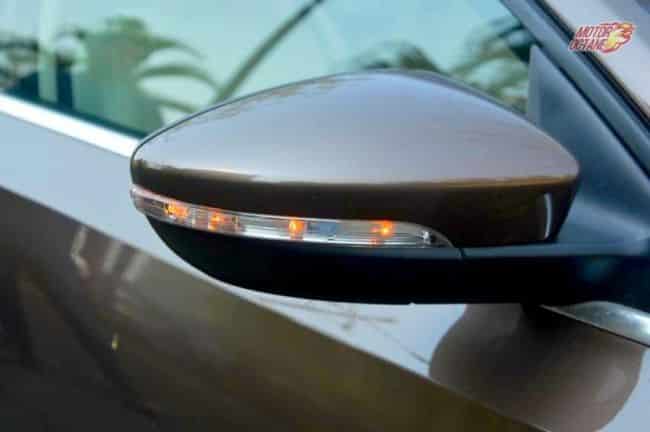
The new Jetta did look contemporary and stylish, compared to the previous iteration, which had the same Golf fascia. With the new Jetta reaching its mid-life, Volkswagen had recently upgraded the Jetta with some cosmetic upgrades on the sedan. We lay our hands on the petrol as well as the diesel engines and share our report.
The exterior of the new Jetta reminded us of its younger sibling— the Vento. The headlights looked quite similar in its previous model, but the facelift now reminds you of the outgoing Passat. It gets the same white dotted LEDs in the front that was seen in the Passat. The side profile remains unchanged. The tail lamps have now become sleeker, and this will definitely remind you of the Audi A4. The older alloy wheels looked better in our opinion, but the Jetta now looks a lot more premium than sporty.
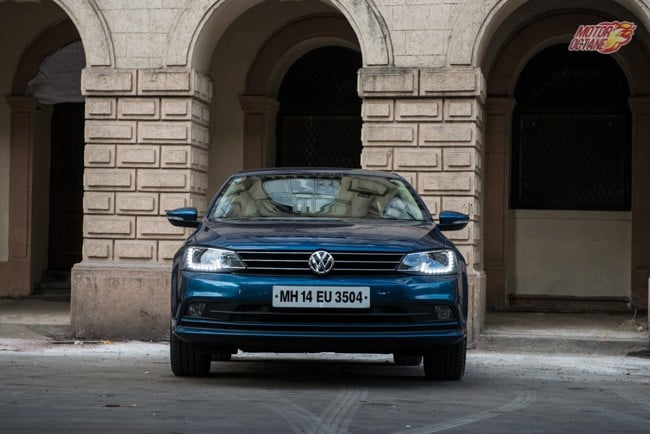
The interiors looked clean with minimal buttons and knobs making it a simple dash layout. As far as the design is concerned, there aren’t any evident changes except the infotainment system screen, which now houses Bluetooth connectivity as well. There was an option for Bluetooth system earlier on also, but the wasn’t functional on the previous Jetta. The system has all the features pertaining to media, phone and other input connectivity. The petrol range topping variant doesn’t get the touch-screen feature and there are reverse parking sensors without any display.
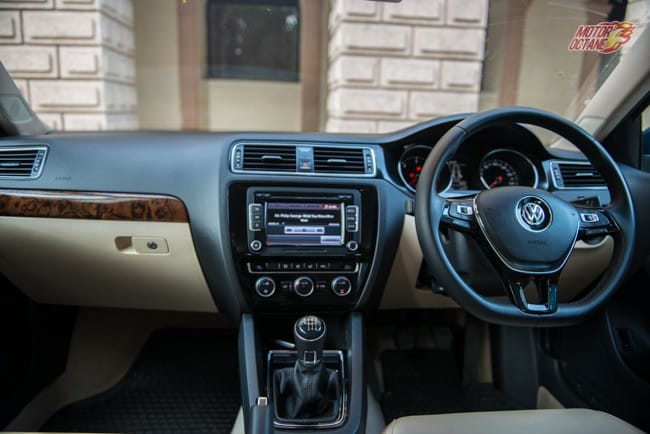
The Jetta MY15 now gets dual-zone climate control system that wasn’t there on the previous Jetta has it had a conventional ait-con. Below the touch screen are the A.C knobs which consist of dual climatic control for both driver and passenger, allowing to tune their settings individually. There is also an option to synchronize the dual zone if needed. The steering itself was felt to be another instrument cluster having plenty of controls; at the first glance it was difficult to understand its layout. The steering gets controls like media, vehicle information, cruise control and it even houses paddle shifts.
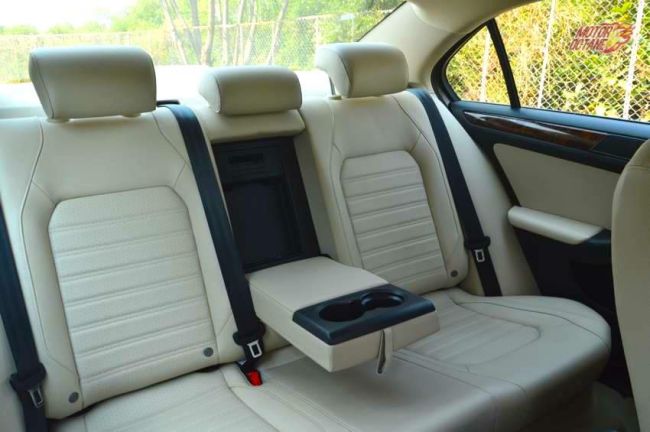
The seats of the Jetta provided are hard but comfortable. The driver had eight-way adjustable seats are controlled electronically, whereas the passenger seat had manual adjustments. This feature is available only on the 2.0-litre diesel top-of-the-line trim. The back seats were broad enough to incorporate three at the back but the transmission tunnel was a hurdle. Again the comfort was sufficient for long road trips. There are rear AC vents with adjustable controls as well and there is still the same access to the boot from the rear seats.
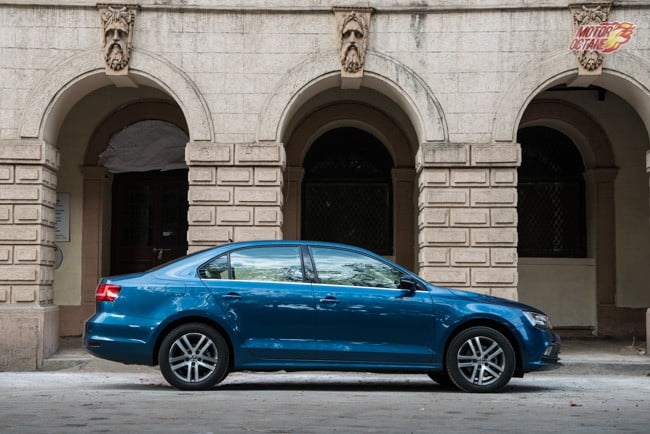
The new Jetta comes loaded safety features like the collapsible steering, six airbags as a standard, driver attention signal which measures the fatigue levels and suggests the driver to take a break. Other common safety features are the ABS, EBD.
The Jetta comes with two engine options, the 1.4-litre petrol engine and the 2.0- litre diesel engine. The petrol engine is mated with a six-speed manual transmission, which manifests a decent 120bhp of torque and 200Nm of power, whereas the diesel engine is also mated with six-speed DSG or manual transmission, which churns out 138bhp of torque and 320Nm of power. We drove both the manual petrol and the DSG diesel engine.
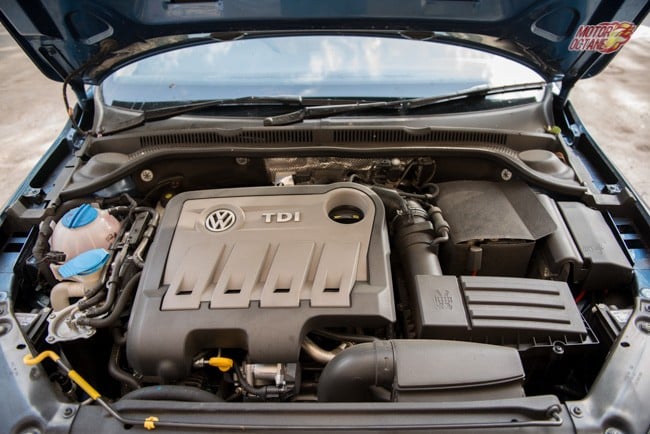
First we drove the 2.0-litre diesel automatic and it is highly adaptive. Press the gas pedal and the gears downshift in no time. There is a thorough feeling of thrust which pulls you back when revved hard. There is plenty of power available at any given point of time. The fun factor truly comes because of the perfectly tuned DSG gearbox, which is so accurate with its gearshifts, this finely tuned engine. While cruising, the transmission shifts into the sixth gear at speeds of about 70km/hr.
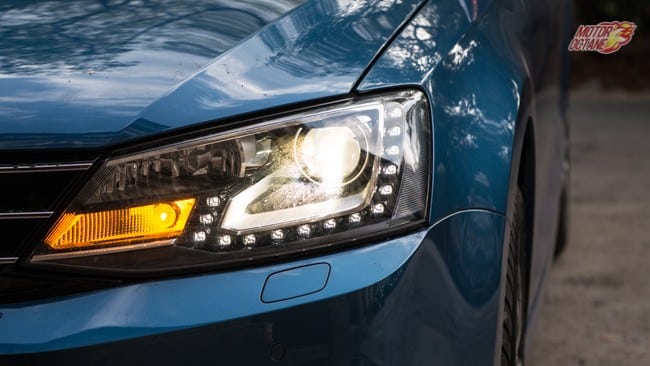
While we drove the 1.4-litre turbocharged engine, it dint excite us after driving the diesel DSG. Though the engine was turbocharged it dint give the same feeling as the 2.0-litre diesel did. There was some power latency till it crossed the 1900 rpm mark and then the turbo kicked in. This power was actually enough for daily commuting to work or when you hand the steering wheel to the chauffeur. The six-speed transmission was truly for cruising purpose.
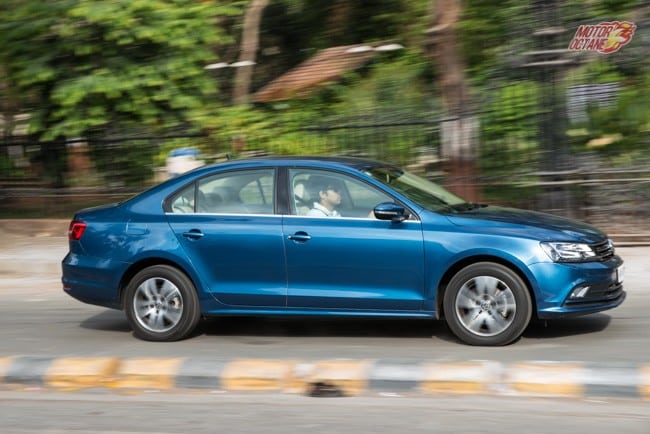
Out of the two engines I would pick the diesel DSG as it has more power and better mileage.
We recorded a mileage of 16km/l overall in city and highway whereas the 1.4 litre petrol gave a mileage of 12-13km/l in both city and traffic conditions. The DSG being more efficient yet powerful, it would be the right choice for the ones who wish to drive the car themselves plus maneuver in daily city traffic conditions.
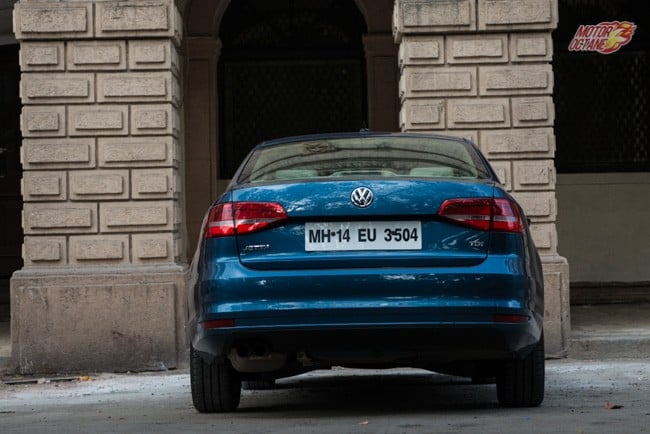
The handling of this car is certainly a benchmark in this segment. It is stable at high speeds. The steering is well balanced and provides enough confidence while cruising at high speeds or even taking tight turns on twisted roads. The ride quality is pliant too. The car felt pliant on bad roads, soaking up most of the potholes. Despite the stiff suspension, the rear passengers will be happy and comfortable. The Germans always manage to satisfy when it comes to comfort at the back and the drive at the front.
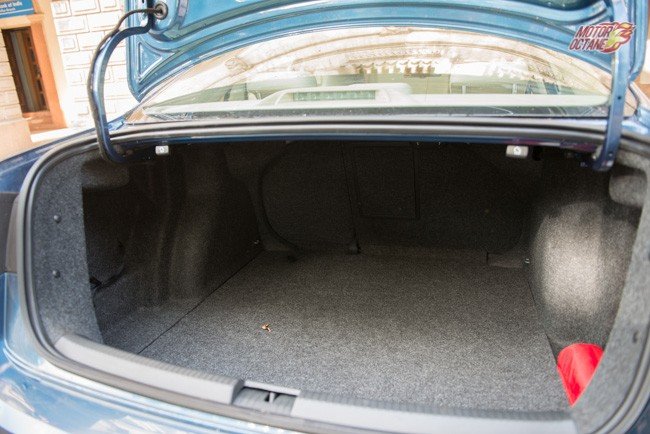
The Volkswagen Jetta’s pricing could have been better.
The Jetta is launched with two petrol trims and three diesel trims. The starting price for the base petrol variant is Rs 16.6 lakhs (on-road, Mumbai) and top variant will cost around Rs 18 lakhs. The diesel base variant will cost around Rs 18.4 lakhs and the top end variant with the DSG transmission is priced at 22 lakhs making it slightly unaffordable for many and overpriced for a D segment car. But then you won’t get this blend of power, efficiency, space driving dynamics, quality and badge on any other car in this segment, especially if you are self-driving.

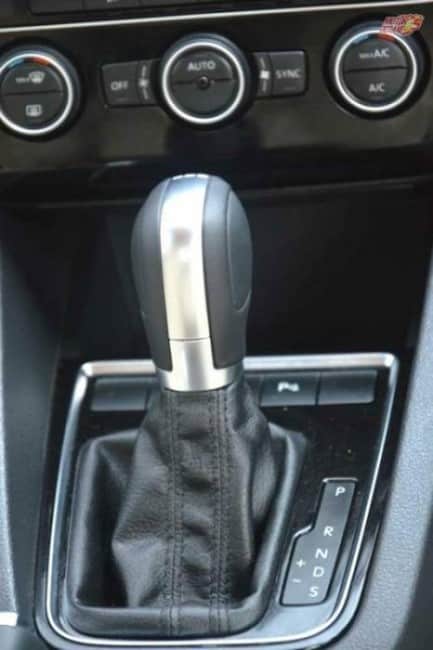
Comments